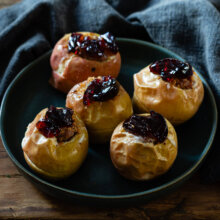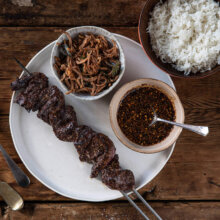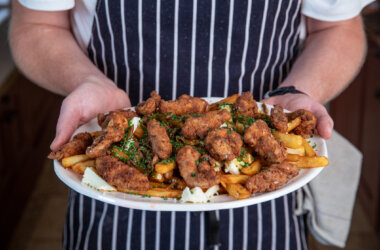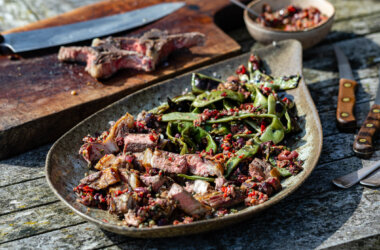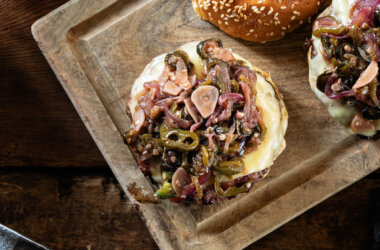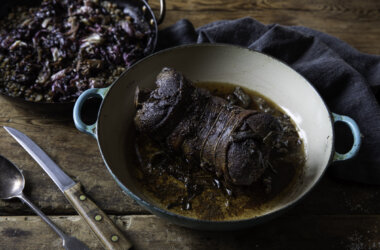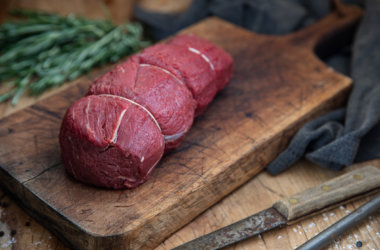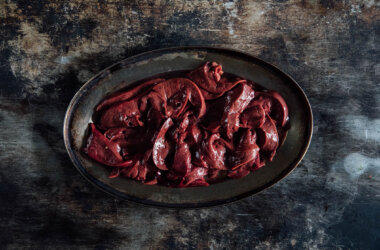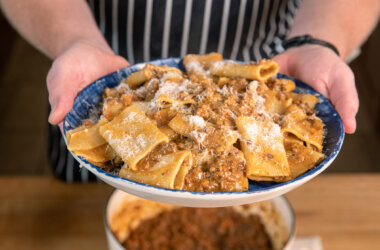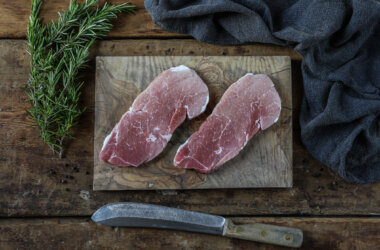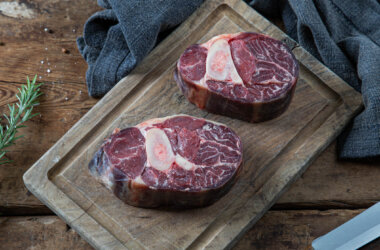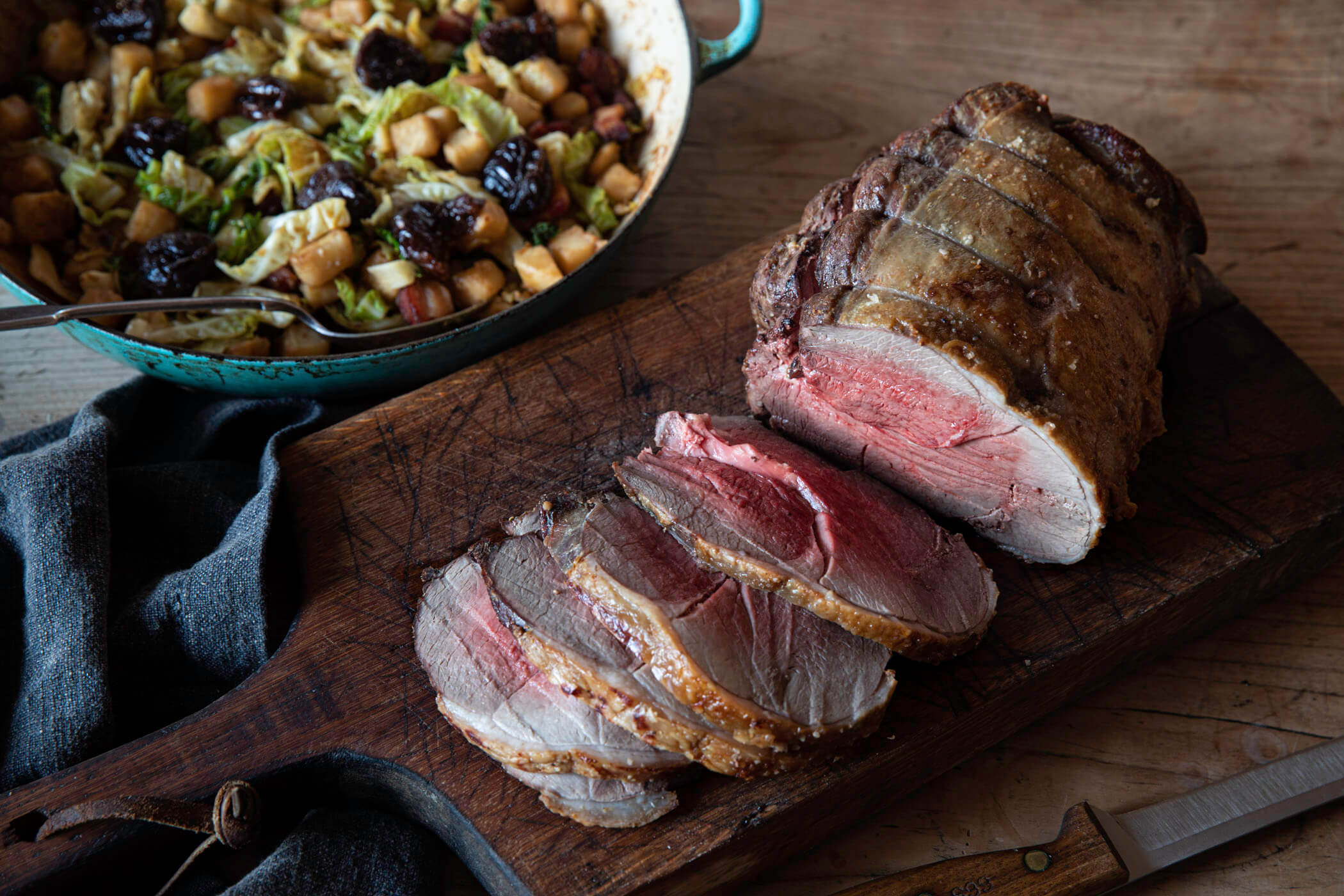
A perfect joint for a Sunday afternoon, offering something a bit different from the usual roast dinner fare. With its own unique flavour, it pairs perfectly with this Autumnal tumble.
There is something uniquely satisfying about celeriac, bacon, and cabbage cooked in this way, with the addition of prunes making it a perfect marriage for this lovely venison joint. If you have the time, I implore you to use it and make a sauce/gravy to help lubricate the dish. A very decent bottle of red wine and perhaps a warm dessert served with custard would probably turn this into the perfect meal.
Serves 5-6
Ingredients
Prunes
Sauce
Method
For the Prunes
- Tip the water, sugar, brandy, star anise and bay leaves into a pan and bring to a boil.
- Remove from the heat and add the prunes. Set aside and leave the prunes to soak up all that lovely flavour overnight.
For the Sauce
- The sauce is the first place to start, as it will take a while to reduce to its glossy, rich finish.
- Preheat your oven to 200°C.
- Place your bones on a roasting tray and roast in the oven for 25-30 minutes, until lovely and browned.
- Meanwhile, take a large pan and set it on a high heat, with a tablespoon of olive oil. Add the carrots, garlic, and onions. Season with salt and begin to sweat off the vegetables. Keep on a medium heat and stir regularly, allowing the vegetables to colour a bit as they soften. Keeping a lid on the pan will help to speed up this process – about 20 minutes.
- Remove the bones from the oven and when the vegetables are soft and coloured, add the bones to the pan, followed by the red wine. Bring to a boil and simmer for a minute, then add the rosemary, thyme, juniper, and the stock.
- Bring this up to a boil and then reduce to a simmer and let it bubble away for an hour.
- Remove from the heat and leave aside to rest for 20 minutes; so that the bones can release any last remnants of flavour into the sauce.
- Pass the sauce through a fine sieve and discard the vegetables.
- In the same pan, return the sauce to the stove and reduce on a medium heat until the desired consistency and flavour are reached (probably about another hour). The sauce should have body and a deep beef flavour, ever so slightly offset by the wine. Taste for seasoning — I like to add a couple of drops of sherry vinegar (or your vinegar preference of choice).
To Cook the Venison
- Preheat your oven to 200°C.
- Make sure to take the Venison out of the fridge at least 3 hours before you intend to cook it. Cooking it from room temperature will make for a much better end product. Also to take into consideration, is that it will need to rest for at least 40 minutes when it comes out of the oven.
- Rub the joint with olive oil and then season well with salt, then place on a roasting tray ready for the oven. Cook at 200°C for 12 minutes, then turn the temperature down to 150°C and cook for a further 40 minutes.
- Remove the joint from the oven and leave somewhere to rest for at least 40 minutes.
- While the venison is resting find a large, heavy bottomed pan for the celeriac and place it over a high heat. Add the lardons and let caramelise and release all their fat, which is essential to this dish. Stir them regularly.
- Once the lardons are a beautiful rich brown and swimming in their own fat, carefully add the celeriac and bay leaves and season with salt and pepper. Reduce the heat to medium and cook them together, stirring regularly, for about 10-12 minutes. You want the celeriac to be pretty much fully cooked, but definitely not mushy.
- At this point, add the savoy cabbage and a splash of stock or water. Stir everything together and fit the lid on the pan. Cook for about 4 minutes like this, then remove the lid and continue cooking until the cabbage is wilting.
- Remove the prunes from their liquid and fold them through the cabbage and celeriac.
- Check the seasoning and adjust as necessary.
- Carve the joint and ensure each plate receives a good lick of that wonderful sauce.
